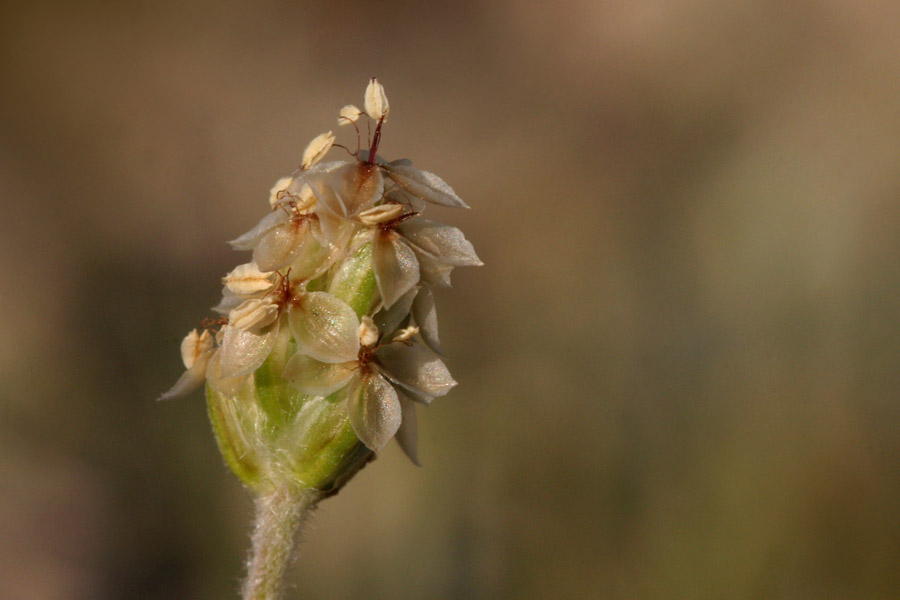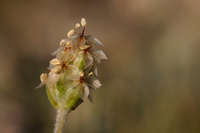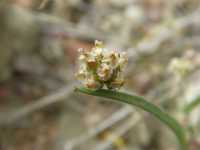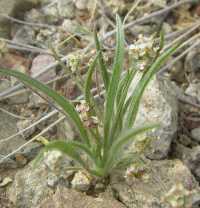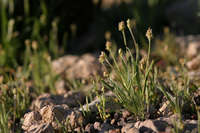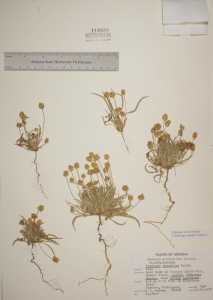Plant: Annual herb; to 38 cm tall
Leaves: usually without distinct petiole; blades linear to linear-lanceolate, 1.5-15 cm long, 0.2-0.9 cm wide, attenuate at base, acute at apex, sparsely to densely villous, obscurely three-veined, the margins entire
INFLORESCENCE: pedunculate, scapose; PEDUNCLES 1.5-29 cm long, villous, with hairs spreading at right angles from stem. SPIKES 0.5-5.5 cm long; bracts broadly ovate, 1.6-3 mm long, broadly scarious-margined to apex, with tufts of white hairs in axils; midvein villous
Flowers: perfect; sepals ovate to obovate, 2.4-3 mm long, broadly scarious-margined; midvein densely villous, more so than bracts; corolla lobes spreading or reflexed, broadly ovate, 1.8-2.4 mm long; stamens 4
Fruit: capsules, breaking at or slightly below midd; SEEDS 2, ellipsoid, ca 2.3 mm long, ca 1.1 wide, reddish-brown to black, the inner surface deeply concave, the outer surface shiny
Misc: Deserts and desert grasslands; 50-2100 m (200-6700 ft.); Mar to May
References: Huisinga, Kristin D. and Tina J. Ayers. 1999. Plantaginaceae. Ariz. - Nev. Acad. Sci. 32(1).
Duration: Annual
Nativity: Native
Lifeform: Forb/Herb
General: Highly variable annual to 40 cm tall, with well developed, slender taproot; herbage, stems, densely pubescent with loose woolly and silky silvery-white hairs.
Leaves: Usually no distinct petiole, blades linear to linear-lanceolate, 1.5-15 cm long, .2-.9 cm wide, attenuate at base, acute at apex, sparsely to densely villous, obscurely three-veined, margins entire.
Flowers: Peduncle 1.5-29 cm long, villous, with hairs spreading at right angles from stem; spike .5-5.5 cm long; bracts broadly ovate, 1.6-3 mm long, broadly scarious-margined; midvein densely villous; corolla lobes spreading or reflexed, broadly ovate, 1.8-2.4 mm long, membranous-papery and brown.
Fruits: Capsule breaking at or slightly below middle.
Ecology: Found in wide ranging habitats in desert, ubiquitous from 200-6,500 ft (61-1981 m); flowers from March-May.
Notes: Can be confused with P. patagonica by virtue of their both being common desert annuals with similar looking leaves, but they can be separated by size and shape of floral bracts. 1.6-3 mm long and broadly ovate in P. ovata vs. 2-16 mm long and linear triangular to subulate.
Ethnobotany: Taken for diarrhea, used as fodder, and the seeds were eaten.
Etymology: Plantago translates to foot-sole in reference to leaf habit on ground, ovata refers to the ovate leaves.
Synonyms: Plantago brunnea, P. fastigiata, P. gooddingii, P. insularis, P. insularis var. fastigiata, P. insularis var. scariosa, P. minima
Editor: SBuckley, 2010


